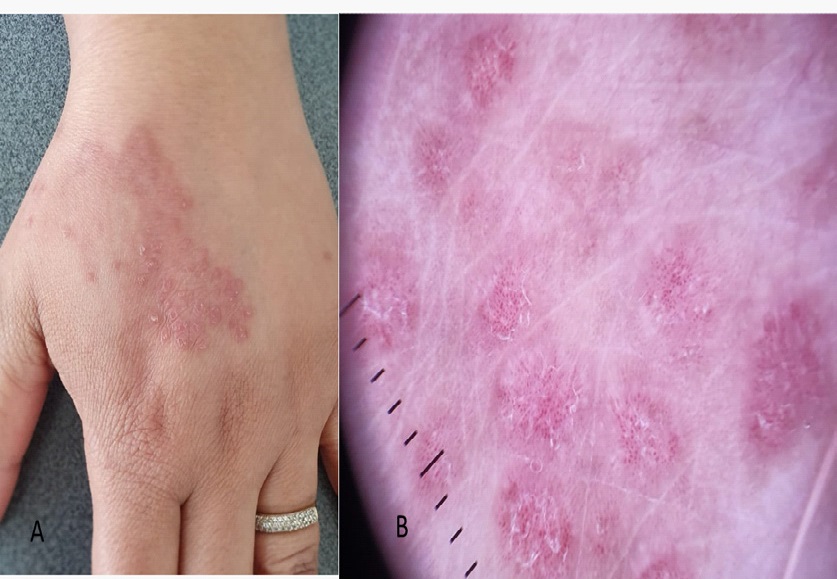
Journal of Clinical Images and Medical Case Reports
ISSN 2766-7820
Case Report - Open Access, Volume 2
Localized psoriasis post hand burn
Sara Elloudi*; Noura Kamli; Fatima Zahra Mernissi
Department of Dermatology, University Hospital center Hassan II, Faculty of Medecine, University Sidi Mohammed Ben Abdellah, Fez, Morocco.
*Corresponding Author : Elloudi Sara
Department of Dermatology, University Hospital
center Hassan II,Faculty of Medecine, University Sidi
Mohammed Ben Abdellah, Fez, Morocco.
Email: dr.elloudi@gmail.com
Received : Mar 10, 2021
Accepted : Apr 15, 2021
Published : Apr 17, 2021
Archived : www.jcimcr.org
Copyright : © Sara E (2021).
Citation: Elloudi S, Kamli N, Mernissi FZ. Localized psoriasis post hand burn. A total endoscopic approach. J Clin Images Med Case Rep. 2021; 2(2): 1053.
Clinical image description
The Koebner Phenomenon (KP) is the appearance of new skin lesions on previously unaffected skin secondary to trauma. This phenomenon is given the fact that the new lesions that appear are clinically and histologically identical to the patient’s underlying cutaneous disease [1].
Psoriasis is a chronic inflammatory disease characterized by this phenomenon. A patient with psoriasis will develop new psoriasiform lesions at any anatomical site on the body, including friction areas or areas exposed to trauma such as the hands.
We report here the case of a 37-year-old patient, followed in our training for plaque psoriasis for 5 years, who was put on topical corticosteroids and phototherapy with improvement.
The patient suffered a superficial 2nd degree thermal burn to the back of her left hand. During the epidermis phase of her burn, the patient showed small erythematosquamous papules within the burnt area, dermoscopic examination of which revealed a homogeneous vascularization with whitish scales in favor of psoriasis lesions in drops (Figure 1). A class strong topical corticosteroid is initiated with good improvement. Potential mechanisms include alteration of polymorphonuclear leucocyte chemotaxis, diminished or enhanced synthesis of arachidonic acid metabolites, changes in the cyclic nucleotide system and modified lymphokine production [2].
The avoidance of trauma and friction is one of the hygienic measures to be adopted in a psoriatic patient
References
- Ju-Hyun Jo, Ho-Sun Jang, Hyun-Chang Ko, Moon-Bum Kim, Chang-Keun Oh, et al. Pustular psoriasis and the Kobner phenomenon caused by allergic contact dermatitis from zinc pyrithione-containing shampoo Contact Dermatitis. 2005; 52: 142- 144.
- Daniela P. Sanchez , Sidharth Sonthalia. Koebner Phenomenon 2020 Dec 1. In: StatPearls [Internet]. Treasure Island (FL): StatPearls Publishing; 2021. Stat Pearls. 2021.

